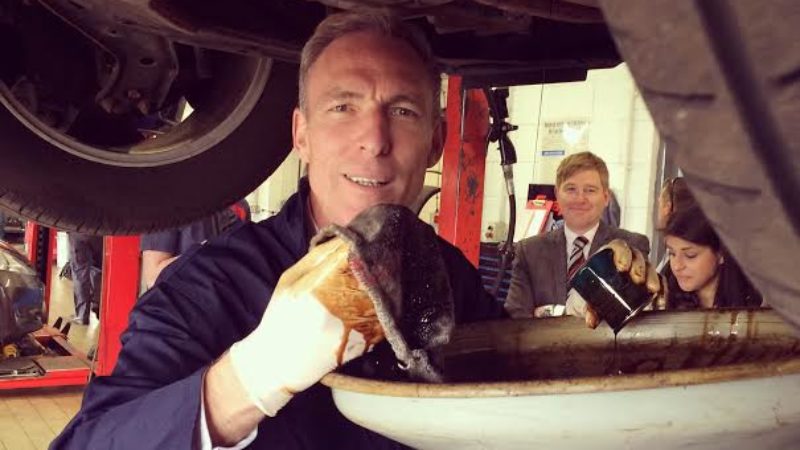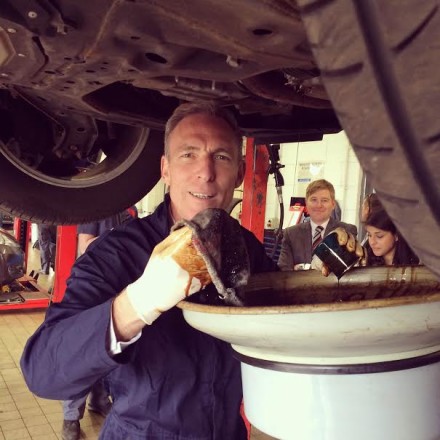

In a two-option referendum, 45 per cent is a resounding defeat. In proportional representation, it’s a very good victory. In a First Past the Post multi-party election, it’s a landslide.
Scottish Labour are having to work on the basis that this is a given. Association with the Yes campaign has seen no boost for either the Scottish Socialist Party or the Scottish Greens, meaning the SNP have hoovered up pretty much the entirety of the pro-independence support. Then factor in a lower turnout, and their ability to appeal to some anti-austerity No voters, and their current 50+% polling position is no mystery.
Despite the SNP’s obvious and huge lead, the polls are not particularly stable in Scotland: there is a gulf of difference between an 18 point lead and a 34 point lead.
But even if you can work out the national averages, applying uniform swing does not appear to paint an accurate picture either. Some small Labour majorities will remain intact, lots of very big ones will disappear. Many other factors need to be taken into account; the strength of the Yes vote in each seat primary among them. Even looking at contact rates does not help: I’m told that an MP with a good contact rate is no more likely to hold their seat than one with a poor campaigning record.
This all makes it difficult to predict how bad things will be for Scottish Labour on Thursday.
However, several sources confirmed to me privately that by their personal estimations, a “good night” for the party would still leave it with fewer than 10 MPs. The reality and gravity of the situation is not lost on anyone.
So, what can be done?
Long term solutions can only be provided after a comprehensive analysis of where things have gone wrong, which obviously should wait until after the election.
In the short term, the party has significantly upped its ground game. While decent contact rates may not save some very good MPs this week, an easy dominance in Westminster elections has left the party with far from desirable doorstep data across the board. This week proved that had changed: since January Scottish Labour have had 500,000 conversations with voters.
This will help with squeezing the smaller parties – including the Scottish Tories. It is a common observation among activists that while the party is getting clobbered in previous strongholds, they are finding positive receptions in places that used to be no-go areas. There is a notable movement to Labour from old foes who would like to stop Scotland becoming a one-party state. Out on the doorstep, it seems like the world is upside down.
For taking on the SNP, it seems the spectre of a second referendum is currently the best shot. It is an issue that provides a neat dividing line. On Friday night, Jim Murphy said the three words that define Scottish Labour come from Clause IV: “democratic socialist party”. The three that some up the Scottish Nationalists, on the other hand, are the first three of their constitution: “Independence for Scotland”.
It is a language of priorities, the idea of social justice vs independence, that clearly is having some cut-through. At First Minister’s Questions on Thursday, Deputy Leader Kezia Dugdale said the SNP’s “three r’s” were “referendum, referendum, referendum”. That night on the Ask Sturgeon programme that followed the leaders’ Question Time, Sturgeon was pilloried by the studio audience for her failure to rule out another plebiscite. One questioner at the event said she wanted to join the SNP, but was put off by the obsession with delivering independence. The difficult question Scottish Labour will have to ask itself is: why hasn’t she joined us?
But for the SNP, the questions they ask themselves may be harder still. Their party activists seem to be a coalition, split roughly three ways. Some are the old-school “Tartan Tories”, the middle class that traditionally made up the party’s core base. Then you’ve got the social justice lefties, for whom an independent Scotland is just a means to creating a fairer country. Then you have the independence obsessives. We could see a struggle there over the coming years between those who think independence is the most important issue and those who think opposing austerity is paramount.
Intimidation remains a problem from the referendum. Organisers told me that they had never before seen an election where Labour supporters were so reluctant to put a poster in their window. In one constituency, I was told, they’d put up around 20 “Vote Labour” signs in gardens so far. Each one had been vandalised or stolen within 24 hours.
Will there be shy Labour voters? I don’t know, but the Labour voters are shy.
Outside a Labour rally in Glasgow, a group of protesters had gathered. They surrounded the entrance, forcing people to walk through the crowd, chanting “Red Tories out”, waving placards bearing slogans like “Bow down to your masters”, filming those entering and screaming abuse in people’s faces – of which “scum” was one of the kinder remarks.
For the Labour members inside, it was all too familiar. “Welcome to Scotland,” one sighed as I came in.
It’s hard not to believe that this undercurrent of nastiness in the Nationalist movement will cause problems for Sturgeon at some point. Her failure to come down hard on candidates who have crossed the line must surely help fuel the idea that this behaviour is acceptable. Whether it’s Margaret Curran’s opponent, who thinks the Shadow Scotland Secretary is an acceptable target for “community justice”; the candidate in Edinburgh South who has been moonlighting as an anonymous Twitter troll; or the person who could displace the would-be Foreign Secretary, who would like to headbutt Labour councillors – the SNP undeniably have a problem that needs addressing.
Past the mob, inside the rally, was a culmination of what had been evident in various organising offices across the country: Scottish Labour is not a party about to die. There is enthusiasm and, occasionally, there is even hope. Not so much for this Thursday, which everyone knows will be a drubbing, but for a revival.
Why is morale so high? There is a backs against the wall, us versus the world mentality, not dissimilar to the feeling apparent in the final weeks of the 2010 campaign. There is a sense among activists that they are fighting the good fight – that while they might lose, they are right. These kind of ideas are bound to breed camaraderie. Standing together, even in defeat.
There are even new members signing up. The party’s membership is not in the rudest health, we know that, but many of the most committed activists now are those who got involved through the Better Together campaign.
These are dark days for Scottish Labour. This election will be tougher than anyone could have predicted. But there is life in the old party yet.




More from LabourList
‘The Employment Rights Bill is a massive step forward – but we’re not done delivering for working people’
‘Britain’s G20 Presidency is Labour’s chance to lead a global reset’
Is Andy Burnham’s star dimming amid repeated hints at leadership ambition?